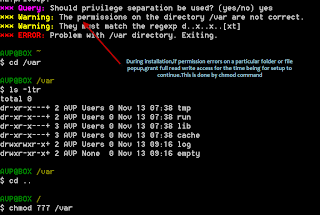
- #Eclipse ssh shell enter twice install#
- #Eclipse ssh shell enter twice full#
- #Eclipse ssh shell enter twice verification#
- #Eclipse ssh shell enter twice password#
- #Eclipse ssh shell enter twice download#
#Eclipse ssh shell enter twice password#
This is more secure than a password and greatly reduces/eliminates the possibility of a successful brute force attack. When a connection attempt is made, a challenge/response routine takes place that authenticates who you are and sets up a secured connection. The private key is secret, known only to you, and stored on the client whereas the public key is well known and provided to the server. SSH keys use the public/private key paradigm to verify the authenticity of a connection and your password is never sent to the server you're connecting to. Consequently, anyone with your password can get in and eavesdropping on your connection is a possibility, albeit difficult.
#Eclipse ssh shell enter twice verification#
Ssh approach is fine but it involves sending your password to the server for authentication and there is no verification of who you are. You can do this with the following command. Let's assume you need to connect to as user superman. This article breaks down the confusion and simplifies the process to a point where you'll wonder why you haven't been doing this all along. However, when you ask people to use a public/private keys to connect, it starts to get a little murkier - mainly because the process is not well understood by some folks. Learn more from our Managed VPS Hosting Product Guide.Using SSH to securely connect to remote servers is well understood by anyone needing to do it. If you can access your WHM, you can enable SSH through your WHM.Ĭongratulations, you have now successfully logged into your server via SSH!Īre you trying to get started with Ansible? Make sure you generate an SSH key before getting started with your Ansible Management Container. Note! If you get an error stating Shell Access is Not Enabled on your server, you will need to contact tech support to have our higher level of support enable the shell access.

In this tutorial, I am using as the host name, “ brad” as the cPanel username, and the ******** as the password.Ĭan’t connect? Getting an error message Network Error: Connection timed out? Be sure to add your ip address to the firewall. Host Name:Īs your hostname, you can use either your server’s ip address, your domain, or your server name (as in vps#. or ) Your hostname and username can be found in the Technical Details of your AMP home page. Before we open PuTTY, you’ll need the following settings: It supports several different network protocols. PuTTY is a free, open-source terminal emulator written by Simon Tatham that gives you access to SSH.
#Eclipse ssh shell enter twice full#
If you do not specify the full username such as, the server would instead try to login as your local user, in this case, and because that user doesn’t exist on the server you’d get a login error. If you are trying to directly connect from a Linux or Mac terminal via SSH, please note the format of the command would need to be in this format:18If you are trying to directly connect from a Linux or Mac terminal via SSH, please note the format of the command would need to be in this format:$ ssh -p 22 This applies to Windows users with OpenSSH: Open the Start menu,select Powershell, and then Run as Administrator.
#Eclipse ssh shell enter twice install#


Both of these requirements can be fulfilled through the WHM interface. These include making sure that your account has been granted SSH access and that your IP address has been added to the firewall. There are a few requirements for using SSH with your VPS or Dedicated Server. Requirements for using SSH to login to your VPS or Dedicated Server Shared server users, please see SSH access for Resellers and Shared Servers.
#Eclipse ssh shell enter twice download#
For Windows users without an SSH client, we recommend you download PuTTY or enable OpenSSH. In this tutorial, we’re going to be using PuTTY to connect to your managed VPS, Cloud or dedicated server via SSH.


 0 kommentar(er)
0 kommentar(er)
